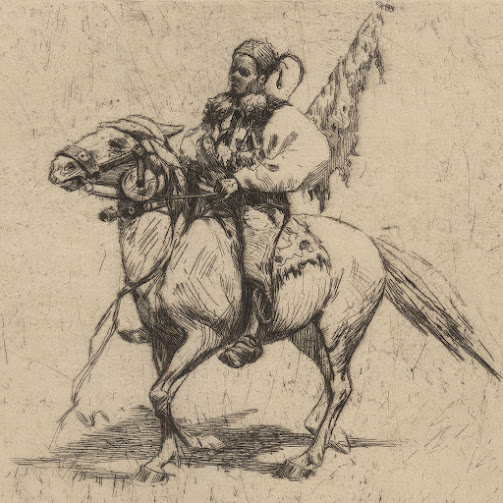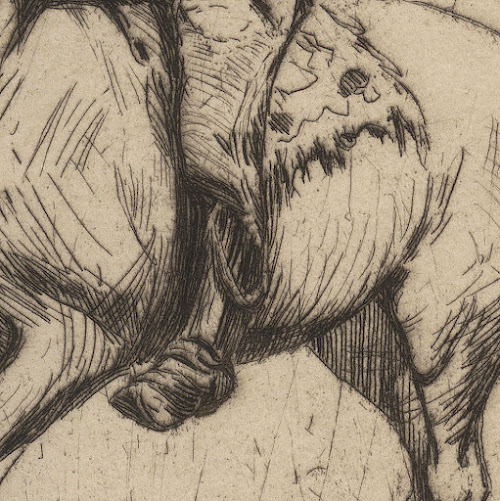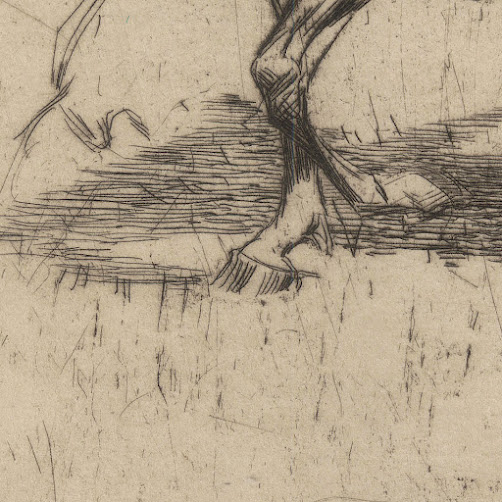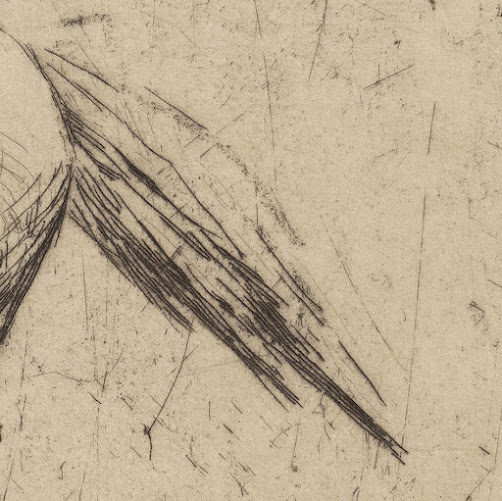Józa
Úprka (1861–1940)—The
British Museum offers biographical details regarding this artist; see: https://www.britishmuseum.org/collection/term/BIOG52120
“Pfingstreiter”—in translation, the “Whitsun
Rider”, or King’s Rider, in the Moravian Slovakia (south-eastern Czech Republic) folk tradition (see https://www.gonomad.com/142751-moravias-ride-of-the-kings), 1903,
printed by the K. K. Hof- und Staatsdruckerei (K. K. Hof and State
Printing Shop) (fl. 1847–1916) and published in Vienna by the Gesellschaft
für Vervielfältigende Kunst (Society for Reproducing Arts) (fl. 1871–1934)
(see the interesting information about this publisher offered by Art of the
Print: http://www.artoftheprint.com/artistpages/uprka_joza_phingstreiter.htm).
The British Museum offers the following
description of this print: “Participant in Moravian festival, on horseback
holding banner. 1903 Etching, with surface tone” (https://www.britishmuseum.org/collection/object/P_1985-1109-119).
Etching with plate tone printed in brown ink
on cream wove paper with full margins (as published) and backed with a support
sheet.
Size: (sheet) 39.3 x 28.6 cm; (plate) 15.4 x
20.4 cm; (image borderline) 14.3 x 19.2 cm.
Lettered along the lower edge of the sheet:
(left) “JÓZA UPRKA, »PFINGSTREITER«. ORIGINALRADIERUNG.”; (centre) “DRUCK DER
K. K. HOF- UND STAATSDRUCKEREI, WIEN.”; (left) “VERLAG DER GESELLSCHAFT FÜR VERVIELFÄLTIGENDE
KUNST, WIEN.”
Condition: a strong and well-printed
impression with generously wide margins (as published) laid
onto a support of archival (millennium quality) washi paper. There are several
fractures to the edges of the sheet (now supported), otherwise the sheet is in
an excellent condition with no significant tears, holes, folds, abrasions,
stains or foxing.
I am selling this rarely seen etching on the
art market for AU$256 in total (currently US$185.92/EUR165.63/GBP138.54 at the
time of posting this print) including postage and handling to anywhere in the
world, but not (of course) any import duties/taxes imposed by some countries.
If you are interested in purchasing this marvellous etching capturing a fleeting moment in the charge of a King’s Rider in a folklore event—note the way the artist’s has suggested the speed of the horse’s advance by adding a touch of ambiguity to the rendering of its hooves and how the spicks and specks of foul-biting in the background adds to the effect of a frozen moment—please contact me (oz_jim@printsandprinciples.com) and I will send you a PayPal invoice to make the payment easy.





















































